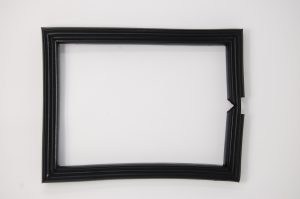The thermal and electrical properties of rubber compounds are key considerations when selecting a sealing solution. Elasto Proxy is a fabricator and distributor that provides companies with industrial rubber products. Keep reading to learn about rubber’s thermal and electrical properties, or compare compounds based on material properties.
Thermal Properties
Rubber compounds for industrial sealing have two main thermal properties: service temperature and heat aging. Both are given as a range with minimum and maximum temperatures. With thermal properties, it’s important to remember that temperature alone doesn’t affect performance. Mechanical loading, contact with chemicals, and the duration of high-temperature and low-temperature exposure are also factors.
Service Temperature
Service temperatures are the highest and lowest temperatures at which a compound can be used. If your application is hotter than the maximum service temperature or colder than the minimum service temperature, seal failure will occur. This failure might not be immediate, but it will occur far more quickly than if you exceed the compound’s continuous service limits.
Heat Aging (Continuous Service Limits)
Heat aging, a reduction in material properties, occurs naturally as a compound is exposed to normal service temperatures over time. The continuous service limits are the temperature range at which a compound can be used without a significant reduction in its properties. This includes physical properties like tensile strength and impact strength, but also dielectric strength, which is an electrical property.
Electrical Properties
Rubber compounds for industrial sealing have two main electrical properties: dielectric strength and electrical insulation. Because rubber is normally an electrical insulator, it can help protect against electrical shocks. By contrast, metals are electrically conductive instead of electrically insulating.
Dielectric Strength
Dielectric strength describes a compound’s resistance to dielectric breakdown, the point at which an insulating material stops preventing current from flowing under electrical stress. Rubber compounds are good electrical insulators, but only to a point. If a compound reaches dielectric breakdown, it will begin to conduct electricity until the voltage is reduced.
Electrical Insulation
Electrical insulation describes a compound’s resistance to the flow of electrical current. It’s different than dielectric strength, which is a function of a maximum voltage. Voltage measures electric potential energy per unit charge. Volts (V) are the unit of measure. Current is the flow of electric charge through a circuit. Amperes (amps) at the unit of measure.
Find Thermal and Electrical Properties for Rubber Materials
For more information about selecting the right rubber for industrial seals, contact Elasto Proxy.









